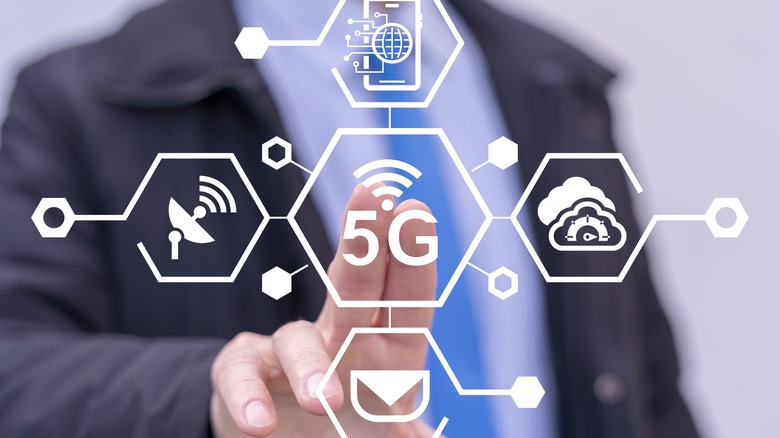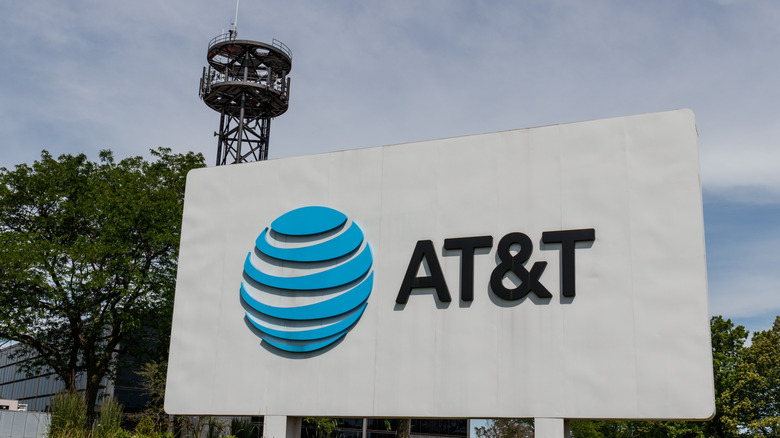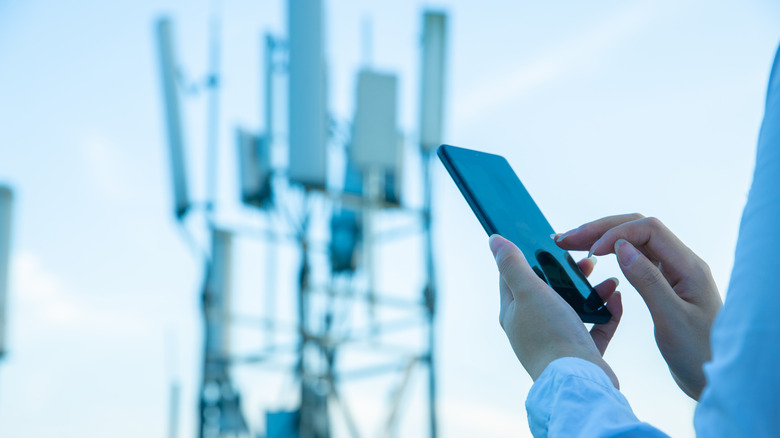Here's What 5G+ Means On Your Phone (And Why It Matters)
5G began rolling out in the U.S. in 2019, and while 5G Advanced — the next major network upgrade — is already in the works, there are still parts of the country without coverage. Many smaller towns and rural areas still only have access to 4G LTE.
Even if you are in an area with 5G coverage, what you get with your network can differ widely, based on various factors including your carrier, plan, location, and device. Depending on your carrier, you might see icons like 5G+, 5G UC, or 5G UW popping up on your smartphone's status bar. Understandably, this can be pretty confusing. The 5G+ symbol is exclusive to AT&T, or one of the MVNO carriers that use its network, like Cricket Wireless.
AT&T classifies 5G into two types: 5G and 5G+. While 5G uses low-band spectrum with speeds that are marginally better than 4G LTE, 5G+ uses mid-band or high-band spectrum, resulting in much faster speeds that can peak at 1 Gbps.
The difference between 5G and 5G+ on AT&T
5G networks are available on three different spectrums: low, mid, and high. The low-band spectrum, or just 5G, is the most widespread. In the case of AT&T, low-band spectrum is available across nearly 25,000 cities and towns in the U.S., covering approximately 300 million people. While you're not going to get the fastest speeds with plain old 5G, it's reliable and gets the job done, and is what you'll probably have access to if you opt for AT&T's home internet service.
5G+ is where things can get confusing, because AT&T uses it to denote both its mid-band and high-band spectrum. AT&T's mid-band spectrum is fairly widespread too, serving about 220 million people. It provides faster speeds than basic 5G, and you're likely to find it in most metros.
The high-band spectrum, in contrast, is available only in select high-traffic locations in some cities. According to AT&T, high-band 5G is currently available in over 80 locations across 50 cities. High-band networks support superfast speeds, but they're not great at passing through walls and obstacles, which is why the range tends to be limited. You'll usually find this type of 5G in stadiums, airports, popular venues, and entertainment districts.
While you won't be able to tell if you're connected to mid-band or high-band spectrum just by looking at the 5G+ logo, if you notice significantly faster speeds, and you're in a high-traffic area, you're probably connected to the high-band network.
5G+ Vs. 5G UW Vs. 5G UC
5G+ is basically a marketing term used by AT&T to denote faster 5G, and while it can be confusing, other carriers have their own terms too. For example, T-Mobile uses the term 5G UC (Ultra Capacity) to refer to its mid-band and high-band 5G networks. In terms of 5G coverage, T-Mobile is the most widespread in the U.S., particularly when it comes to the mid-band network.
Verizon, on the other hand, calls its mid-band and high-band networks 5G UW, or Ultra Wideband. Verizon initially only referred to high-band as 5G UW, but now includes the mid-band network too. Adding more marketing jargon to the mix, Verizon used to refer to its low-band 5G network as "5G Nationwide."
It's worth noting that if you happen to see a 5GE symbol on the AT&T network, this isn't 5G at all. 5GE stands for 5G Evolution, which is basically an enhanced version of 4G LTE. The National Advertising Review Board even recommended that AT&T stop using the misleading icon back in 2020, but it still shows up in some locations.


